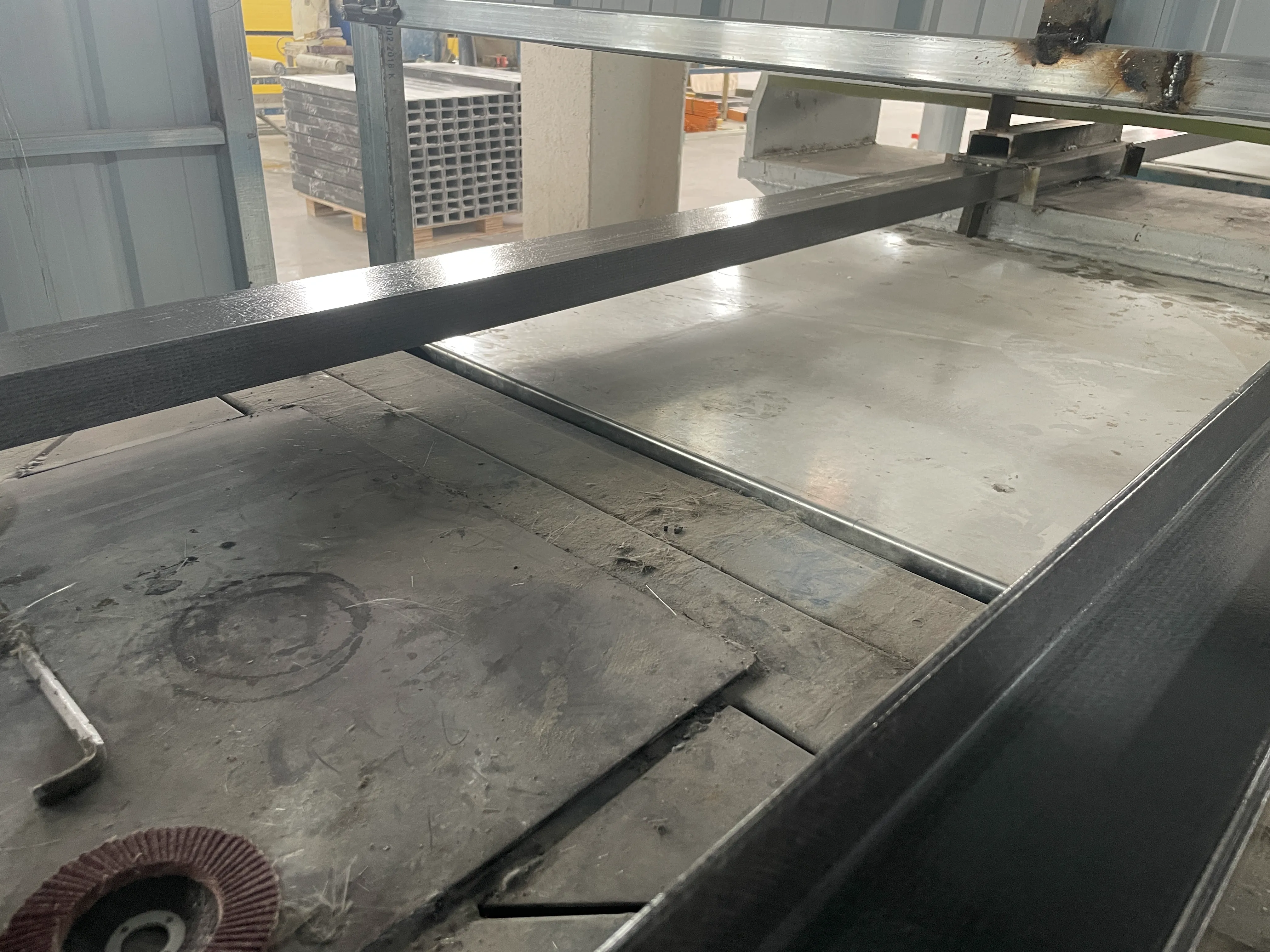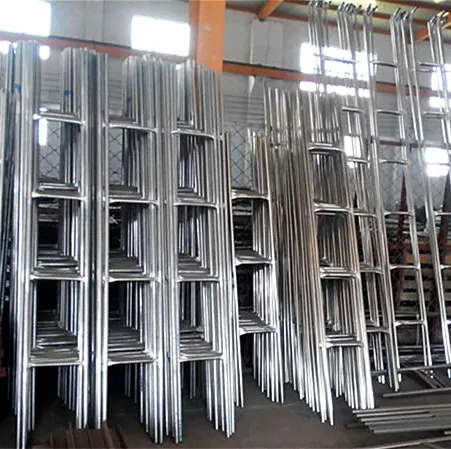loading...
- No. 9, Xingyuan South Street, Dongwaihuan Road, Zaoqiang County, Hengshui, Hebei, China
- admin@zjcomposites.com
- +86 15097380338
- Welcome to visit our website!
FRP Pultruded Sections High-Strength & Corrosion Resistant

(frp pultruded sections)
FRP Pultruded Sections: Engineering Excellence in Modern Construction
This comprehensive overview explores the industrial applications of advanced composite materials through the following sections:
- Fundamentals of pultrusion manufacturing technology
- Mechanical properties and performance advantages
- Comparative analysis of industry-leading manufacturers
- Structural design capabilities and custom profiles
- Installation methodology and maintenance protocols
- Cross-industry implementation case studies
- Future development trajectories for structural composites
Advanced Composite Manufacturing Through Pultrusion
Pultrusion represents the most efficient continuous manufacturing process for fiber-reinforced polymer (FRP) profiles. During production, reinforcing fibers are saturated with thermosetting resin and pulled through a heated die, where precise cross-sectional geometries are formed under controlled temperature and pressure. This method enables consistent mechanical properties along the entire length with minimal material variance – commercial production maintains dimensional tolerances within ±0.8mm across standard sections. Industrial pultrusion lines operate at speeds between 0.5-2 meters per minute, depending on profile complexity and resin curing characteristics.
Performance Characteristics of Structural FRP Components
FRP pultruded sections exhibit exceptional strength-to-weight ratios, with typical structural I-beams achieving 60% weight reduction compared to equivalent steel members while maintaining 80% of the load-bearing capacity. Laboratory testing reveals these materials maintain structural integrity in environments where traditional materials fail:
- Corrosion resistance: Withstand 15,000+ hours of salt spray exposure (ASTM B117)
- Thermal stability: Service temperatures ranging from -40°C to 120°C without deformation
- Dielectric strength: 25kV/mm electrical insulation properties
- Fatigue endurance: Over 10⁷ cycles at 30% ultimate tensile stress
Standard sections include I-beams (50x50mm to 400x400mm), channels (C25 to C305), angles (50x50mm to 150x150mm), and tubular profiles with wall thicknesses from 3mm to 25mm. Custom sections can be manufactured to meet specific structural requirements.
Manufacturer Capabilities Comparison
| Manufacturer | Production Capacity (tons/yr) | Standard Section Range | Testing Certifications | Maximum Section Dimensions (mm) |
|---|---|---|---|---|
| Composites Solutions Inc | 14,000 | 85+ profiles | ISO 9001, ASME RTP-1 | 450x450 |
| Structural Composites Ltd | 9,200 | 62 profiles | ASTM D696, ISO 527 | 350x350 |
| Advanced Pultrusion Systems | 18,500 | 120+ profiles | ISO 9001:2015, UL94V-0 | 600x600 |
Custom Profile Development and Design Flexibility
Engineering teams collaborate with manufacturers to develop application-specific solutions through finite element analysis (FEA) modeling. Current capabilities enable:
- Custom die production within 15-25 working days
- Hybrid material configurations (carbon/glass hybrid reinforcements)
- Fire-retardant resin systems achieving Class 1 flame spread ratings
- Integrated connection systems for rapid field assembly
Recent project examples include seismic-resistant structural frames with 500+ kN load capacity and specialized grating systems with open-area percentages exceeding 85% for high-flow drainage applications. Surface texture options range from standard grit patterns to specially formulated non-skid surfaces with coefficient of friction (CoF) values >0.85.
Installation Methodologies and Lifecycle Maintenance
Correct installation follows engineering best practices to ensure structural performance. Standard procedures include:
- Pre-drilling connection points using tungsten-carbide tipped bits
- Applying corrosion-inhibiting barrier pads at dissimilar material interfaces
- Torque-controlled bolting systems (range: 20-70 Nm depending on section size)
- Post-installation alignment verification (tolerance: ≤1mm/m)
Maintenance requirements are minimal compared to traditional materials, with 25-year service life projections without protective coatings. Visual inspections every 36 months and UV degradation testing every 60 months form the core maintenance protocol. In coastal environments, maintenance costs average 18% of equivalent steel structures over 15-year periods.
Industry Implementation Case Studies
Wastewater Treatment Facility Retrofit: Installation of custom FRP structural sections in digestor tank supports reduced maintenance downtime by 200 annual hours, while handling hydrogen sulfide concentrations exceeding 500ppm. The solution eliminated $110,000/year in corrosion-related replacement costs.
Offshore Platform Walkway Systems: Implementation of pultruded gratings across 1,200m² of working platforms decreased structural weight by 28 tonnes versus aluminum alternatives. The non-conductive properties prevented electrical incidents in high-voltage areas, improving safety compliance metrics by 43%.
Chemical Processing Plant: Replacement of carbon steel structural members with FRP pultruded channels in hydrochloric acid storage areas extended service life from 7 years to 25+ years with zero corrosion-induced failures reported after 8 years of operation.
FRP Structural Sections: The Future of Industrial Infrastructure
The composites industry continues advancing pultrusion technology, with recent developments including integrated fiber-optic strain monitoring systems within structural sections and nanotechnology-enhanced resins that increase compressive strength by 35%. As global infrastructure demands grow, FRP pultruded sections provide technically sophisticated solutions that outperform traditional materials in corrosion resistance, installation efficiency, and lifecycle economics. Industry projections estimate 7.8% CAGR for structural FRP sections through 2030, driven by increasing adoption in water treatment, energy generation, and transportation infrastructure worldwide.

(frp pultruded sections)
FAQS on frp pultruded sections
以下是根据核心关键词“FRP pultruded sections”及其相关词(包括“FRP pultruded sections”、“FRP structural sections”、“FRP pultruded gratings”)创建的5组英文FAQs的问答。每个问题使用H3标签包裹,并前缀“Q:”,回答前缀“A:”。所有问题和回答均控制在三句话内,并以HTML富文本格式呈现。Q: What are FRP pultruded sections used for?
A: FRP pultruded sections are composite profiles manufactured through a pultrusion process for structural applications. They provide corrosion resistance and high strength-to-weight ratios. Commonly employed in bridges, platforms, and industrial settings.
Q: Where are FRP structural sections typically installed?
A: FRP structural sections are installed in corrosive environments like chemical plants or marine structures. They offer lightweight design and ease of handling. Often used in place of steel to prevent rust and extend lifespan.
Q: What advantages do FRP pultruded gratings offer?
A: FRP pultruded gratings deliver superior slip resistance and durability in outdoor settings. They require minimal maintenance due to resistance to chemicals and UV degradation. Ideal for applications such as walkways, drainage covers, and safety platforms.
Q: How are FRP pultruded sections maintained?
A: Maintenance involves simple cleaning with soapy water to remove debris. Inspect for surface damage annually but avoid harsh chemicals. Their non-corrosive nature ensures longevity with little intervention.
Q: Why select FRP structural sections over metal alternatives?
A: Choose FRP structural sections for their lightweight build and electrical insulation properties. They resist corrosion and reduce lifecycle costs. Suitable for corrosive sites where metals fail prematurely.
-
The Rise of FRP Profiles: Strong, Lightweight, and Built to LastNewsJul.14,2025
-
SMC Panel Tanks: A Modern Water Storage Solution for All EnvironmentsNewsJul.14,2025
-
GRP Grating: A Modern Solution for Safe and Durable Access SystemsNewsJul.14,2025
-
Galvanized Steel Water Tanks: Durable, Reliable, and Ready for UseNewsJul.14,2025
-
FRP Mini Mesh Grating: The Safer, Smarter Flooring SolutionNewsJul.14,2025
-
Exploring FRP Vessels: Durable Solutions for Modern Fluid HandlingNewsJul.14,2025
-
GRP Structures: The Future of Lightweight, High-Performance EngineeringNewsJun.20,2025
